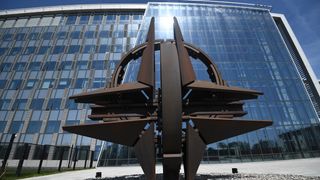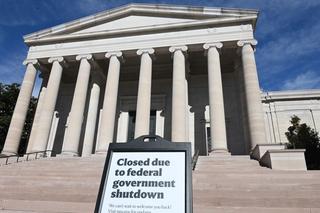A family photo of deep significance was taken in Washington on 10 July. Australia and the three other NATO Indo-Pacific partners – the IP4 – were not in that photo but sat in the room for the third year in a row.
Up on the dais, NATO leaders exuded reassurance to all countries counting themselves in on this remarkable 75-year-old project.
NATO leaders issued an “iron clad” commitment to defend one another against “all threats from all directions” under Article 5 of NATO’s foundational Washington Treaty. They welcomed a new family member, Sweden, and vowed to support Ukraine’s “irreversible path to … NATO membership."
They laser-focused on Russia as the most significant and immediate threat to Europe’s security. In a ringing endorsement of outgoing NATO Secretary General Jens Stoltenberg’s advocacy, they underlined the global, interconnected threats now turbo-charged by the strategic partnership between Russia and China and their foot-soldiers North Korea, Belarus and unnamed non-state actors.
They reminded the world of NATO’s nuclear deterrent and its ability to work against hybrid warfare. But also of a NATO being made fit for a new era of collective defence – in technology, air and missile defence and establishing mobility corridors.
Moscow should be alarmed.
NATO has not only grown in number with the addition of Sweden, but has surged its hard capability with 18 per cent defence spending growth in 2024 and reconfiguration of combat forces stationed along Russia’s long borders with Finland, the Baltic States and Poland. And NATO has learned – from Russia’s own missteps – where and how to move ahead of problem sets stemming from the Ukraine war. NATO has sent a strong deterrence signal against Russia’s rag-tag group of partners in the murky “grey zone” of non-military attacks.
Even the potential for negative impact on NATO by a second Trump presidency seems to be diminished.
So how can Australia contribute going forward?
Key issues for the Washington summit are apparently being answered. Still unclear is the question of whether military hardware from NATO member states can be used by Ukraine to mount attacks on Russian territory. This is a question for individual donor states, not for NATO as a body. The United States has nuanced its position recently to enable Kyiv’s use of US long-range weapons in Russian “cross-border counter fire”. It remains to be seen whether others, including Australia, follow suit.
More clearly, NATO has laid out a plan for integrating and sustaining donor countries’ contributions to Ukraine.
Deputy Prime Minister Richard Marles’ announcement of Australia’s latest package for Ukraine was sensitive to Kyiv’s critical needs and broader planning by the big NATO donors. And Australia will join NATO’s new security and training initiative for Ukraine as an operational partner.
What comes next – more of the same?
In Washington, the NATO IP4 partners – Australia, Japan, New Zealand and South Korea – demonstrated their value-add individually and as a group by reminding the world that our region is the centre of a renewed “illicit military cooperation” pact between Russia and North Korea that “undermines peace and stability in both the Indo-Pacific and European region”.
They vowed to develop flagship projects in four areas: support for Ukraine; cyber defence; tackling disinformation; and the impact of technology including artificial intelligence.
The IP4 is chiming expertly with NATO, demonstrating how focused the four Indo-Pacific partners are on the threats confronting Europe, and why they continue to provide real assistance to a war far from their shores. And they are reminding the world that the efficacy of tools, such as sanctions against Pyongyang’s weapons of mass destruction programs, will quickly erode if UN states parties do not uphold their international commitments.
As the NATO Summit statement acknowledges, NATO leaders see challenges in the Indo-Pacific, underwritten by China, as challenges they do not know how to tackle. This is in part because not all NATO member states agree on the nature and extent of the threat posed by Beijing.
The four IP4 countries can and should show how to move forward on this front.
The challenge is how to counter new kinds of threats – short of warfare – that have the potential to cause critical economic and political destabilisation. And doing so while simultaneously working with China to ensure its own economic security is reliant on the international system built by the major powers these past 75 years.









